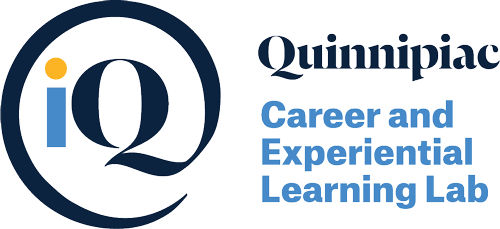QUIP-RS
How Industry Leaders Can Remain Ahead of AI

QUIP-RS
How Industry Leaders Can Remain Ahead of AI
With the rise of AI, Alexandra Kendall ’24, MS ’25 sought to understand the perceptions industry professionals have of the technology.
Overview
To conduct this study, industry leaders in the marketing, public relations and advertising fields were asked how they feel about AI and if it should be integrated. Additionally, their AI literacy and response to AI bias were examined.
Reseacher

Alexandra Kendall '24, MS '25
Advertising and Integrated Communications
School of Communications
Keeping the Crown: How Advertising and Marketing Leaders Can Remain Ahead of AI
Abstract
Since AI has entered the mainstream with ChatGPT in 2022, the world has been abuzz with how to best leverage AI. Leaders in marketing, public relations, and advertising have shown a range in opinions in regards to the introduction of AI into their workflow. Reactions included, but were not limited to: excitement, hesitancy, skepticism, and optimistic. The main concerns came from what to define as AI.
Artificial Intelligence (n): a machine-based system that infers, from the input, generate(s) outputs (predictions), content, recommendations, or decisions that can influence physical or virtual environments (OECD).
Focusing on this definition, and generative AI models that could be used in campaigns, promotion, or other marketing/advertising related work, we questioned professionals. Thusly, we were able to determine important conclusions on usage, regulation, literacy, and gender bias implications for implementation into the workforce.
Literature Review
Some key notes from the literature include:
Integration
- Overall, the ADPR/Marketing communities have expressed excitement at AI being a positive disruptor in improving work efficiency (Panda et. al; 2019, Uhlfelder; 2023, Delaney; 2024).
Policy
- Within the U.S. there is no set regulation or policy for private businesses to follow. But sources point towards the European AI Act for guidance (Scharre; 2024, et al.)
Literacy
- CNBC Workforce Wire stated that workers making less than $50k/year are more likely to express job insecurity (47%) due to AI influences.
- According to a LinkedIn study, AI literacy offers competitive advantages and advocates that more workers must become AI literate, citing a 51% change in skills required by workers (Forbes 2024).
Gender
- There is a lack of diversity in both data and developers in AI. UNESCO 2019 reported a less than 1% of women in the AI development field (Ayesha; 2020).
- Forbes reported in 2020 that only 12% of leading machine learning researchers were female, and only 22% of AI jobs are held by women
Methods (Quantitative)
- Recruitment: Participants were recruited via Linkedin/Facebook ADPR/Marketing groups and PRSSA members. We exceeded the goal of 100 respondents.
- Protocol: After clicking “YES” on a consent page, participants were prompted to complete a 23 question anonymous Qualtrics survey gauging their understanding and opinions on AI. Should they wish, participants were able to submit for a $50 Amazon Gift Card prize. All information is kept confidential and password protected. Data will be destroyed after project completion.
Sampling (In Percent)
The initial number of total respondents was 120. Prior to RQ testing, the data was cleaned. A number of cases were excluded from analysis for one of the following reasons: participants who skipped questions relevant to the analysis; or answered each question with the same answer choice. Additionally, data farther than three standard deviations from the mean were seen as outliers and were therefore excluded. After data cleaning, a total of 84 cases remained.
Quantitative Findings
- Over 40% of professionals use AI for analysis, copyrighting, and ideation.
- 45% of professionals would feel more comfortable with AI if classes on the topic were available.
- 50% of professionals agree policy, regulation, and transparency are important and enforceable when using AI.
- 55% of professionals agree that it is the company’s responsibility to approve and employ bias responsible AI programs into their offices.
- 72% of professionals believe that regulation will offer more comfort when using AI in the workplace.
Methods (Qualitative)
- Recruitment: Interviewees were recruited through outreach to PRSSA, LinkedIn outreach, and referrals. We exceeded the goal of 10 interviews. We prioritized interviews from all levels of employment, demographics, and AI literacy level.
- Protocol: Interviews were recorded and stored on a password protected drive for review, then transcribed. These were one hour interviews via zoom, conducted with written consent. No compensation was provided and participation was voluntary.
- Coding: Employees a dual coding method, transcript cleaning, and member checking.
Interviews: Key Themes
- Quickness
- Accuracy
- Disruptor
- Client Centric
- AI is a Tool
- The Irreplaceable Human Element
- Just Do It/Like A Bike
- Checks and Balances
- Prompting bias
Quotes of Note
“If a reasonable individual can be confused into thinking that their perceived reality is real when it was manipulated in some real way by AI that should be disclosed.” (PR Director).
“AI is not the substitute for judgment…if we don't distinguish ourselves, and if we're not different, they [AI] can just do it. AI is never gonna have the experience I've had…” (CEO in PR).
“This AI, right now, it's just a power. We, the humans get to decide what it looks like. So it's our responsibility to not let it become a weapon. Now, I don't know that we writ large are actually smart enough to control it. And I think we're actually too lazy to try.” (VP in Marketing).
“AI is only as good as what it's drawing from right. If you consider that from a content generating perspective, AI can only pull content that is already in the public domain, and out there in the world for it to to grab” (CEO in Communications).
Findings on Gender
- Interviewees reported awareness of gender bias in AI programs.
- No interviewees noted personal experiences with gender bias in AI, contrary to the literature which reports of various incidents regarding negative implications of AI usage due to bias.
- On all questions regarding bias across the board on the survey people agree there is bias (especially gender bias) in AI.
- Contrary to the interviewees, 4:5 survey respondents (94%) reported they had witnessed gender bias in AI.
- No correlations could be drawn between the gender of the respondent to their views on gender bias. Bias is an agreed issue across the board.
Keeping Up with the Current
- New reports from CMWIRE note that 40% of global marketing companies are progressing from AI experimentation to implementation, and warn against falling behind (CMWIRE 2024).
- Charles Sturt University researches raise concerns over generative AI being used to draft images of people and warn that biased AI generated images may deter women and minorities.
Implications
- Companies need to employ AI and AI literacy to keep up with trends and the future health of their company.
- Bias is an important issue that must be addressed and considered when implementing AI, supported by the literature and findings.
- Policy is needed to provide a guide and security for employees, employers, and clients.
Building AI Policy
Based on Opinions of Acting Professionals
- Transparency: AI usage must be disclosed if the end result can meaningfully deceive another.
- Education: Continuous education on a bi-monthly basis will occur in the form of lunch and learns.
- Expectations: AI related expectations will be thoroughly laid out in job descriptions and updated accordingly.
- Program Restrictions: The business has the responsibility to knowledgeably choose appropriate programs for company use, and ban unapproved programs.
- Violations: Any usage of undesignated programs are subject to conduct violations of the same level as any other company violation.
- Responsibility: All employees are responsible on an individual level for the results made using AI programs.
- Bias: Bias will be prevented through a multi-level checks and balance process via quality control checks.
- Employee Promise: Jobs required of employees will remain regardless of AI innovation. Work level may be modified, but the work force will remain.
- Client Promise: The usage regarding AI will be tailored to the client on a case by case basis.
- Business Promise: The results of the work delivered to clients will remain to be entirely unique to the company.
Future Research
It would be worthwhile to test the effectiveness and limitations of AI generated campaigns in their entirety, then comparing the results to human generated creative. The end goal would be to have a single blind test to compare which creative is most effective, convincing, (or optionally) most likely to be AI generated. This would build upon, test, and reaffirm the results noted in this research.
Faculty Mentors
Victoria Reid
Assoc Teaching Professor of Advertising and Integrated Comm
Advertising Public Relations
For Further Discussion
This serves as an overview of the project and does not include the complete work. To further discuss this project, please email Alexandra Kendall.
Quinnipiac University Interdisciplinary Program for Research and Scholarship
Open to students of all majors, QUIP-RS provides up to $5,000 in funding for undergraduate students to conduct research or complete creative projects alongside faculty mentors. This intensive 8-week program enables students to develop scholarly skills while encouraging discussion about successes and shortcomings with fellows and mentors.
Explore Our Areas of Interest
We've sorted each of our undergraduate, graduate and doctoral programs into unique Areas of Interest. Explore these categories to discover which programs and delivery methods best align with your educational and career goals.
